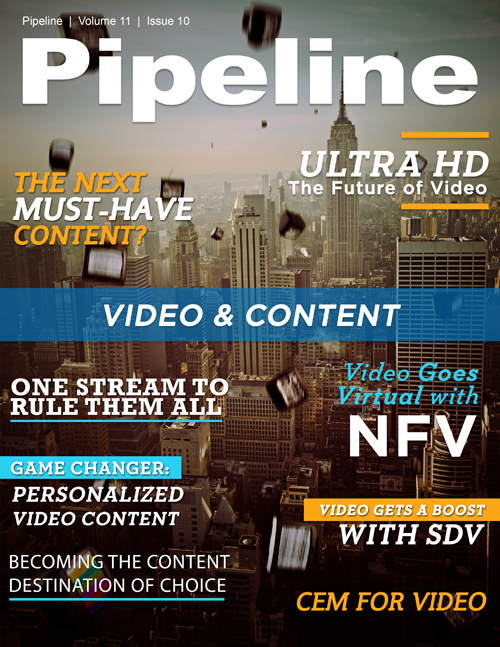Ultra HD 4K: Investing in the Future of Video
By: Jesse Cryderman

Who remembers VHS? The uber-popular consumer video format ushered in home theater experiences, kicked off home-recording, and disrupted appointment-based viewing. And yet, the video resolution (240x480) was truly abysmal in a best-case scenario. Factor in tape volatility and magnetic maleficence, and most often we watched videos that looked like garbled transmissions beamed to Earth from a Soviet orbiter.
Today, better-than-DVD video resolution is the norm. Televisions and monitors sporting 1080p resolution (18 times better than VHS) are ubiquitous and incredibly cheap. This format has become the norm in television, gaming, video on-demand, over-the-top (OTT) video, and mobile. Even our phones and tablets shoot and display 1080p video. Service providers and content delivery networks have made significant investments in their encoding and transcoding software and network infrastructure to accommodate this shift to high-definition (HD) video.
Like Pixy Stix and potato chips, a little is not enough– once folks experience high definition, they want more. The answer is Ultra HD 4K video, and it’s bound to pose some headaches for service and content providers.

It’s hard to believe we once excitedly packed into living rooms to watch videos at this resolution.
While not quite as dramatic as the leap from VHS to 1080p, the difference between Ultra HD 4K and 1080p is awe-inspiring. After reviewing several displays, I found myself saying, “I want that!” Ultra HD serves up 8.3 million pixels, making it essentially four times clearer than 1080p HD video. The pixels are so small that I found it impossible to see them. Instead, you’re presented with an animated work of art, a moving painting. Whether or not the experience is enough for the bulk of consumers to shell out $1,000 for a new screen in 2015 remains to be seen; but one thing is certain: sooner than later 4K is coming to your network.
Tuning in to Ultra HD
With four times as many pixels to tickle the eyes, file sizes swell accordingly. A typical two-hour Ultra HD movie stream clocks in at around 40 GB. From a customer perspective, this doesn’t play well with the data caps and throttling practices employed by many Internet service providers. Comcast, for example, is currently trialing data usage plans in several cities. These plans include 300GB of bandwidth each month, and charge $10 for 50GB extra, beyond the data cap. In this scenario, Ultra HD gets expensive quickly. A family of four could easily tap out the bandwidth bucket in a day by streaming movies on Saturday. Each additional movie would cost nearly $10 in bandwidth under such a billing scheme. There is currently active debate in the U.S. to address some of these issues with Net Neutrality provisions, but the outcome is far from decided.
Consumers don’t just watch video in Ultra HD, however. Gaming, which is more popular than any other form of media, connects thousands of players simultaneously with 4K experiences, and these typically are marathon sessions. (If you know any gamers who play for less than two hours per session, please contact me at jesse@pipelinepub.com.) What’s more, the next wave of mobile devices showcased at Mobile World Congress 2015 sport 4K video and photo. This means those fun little family videos from Bobby’s soccer game are now bill wreckers. In fact, just one 4K video sent over cellular could eat up an entire month’s worth of mobile data under most plans on the market today!
These impending bill-shock dystopias are a reflection of the challenges service providers face. Simply put, the costs will be passed on to the consumer until network infrastructure, compression technologies, and capacity management are improved to accommodate such massive file sizes. There is a silver lining, however: service providers who innovate quickly will be able to deliver Ultra HD 4K at a much lower price point than those who don’t.



















